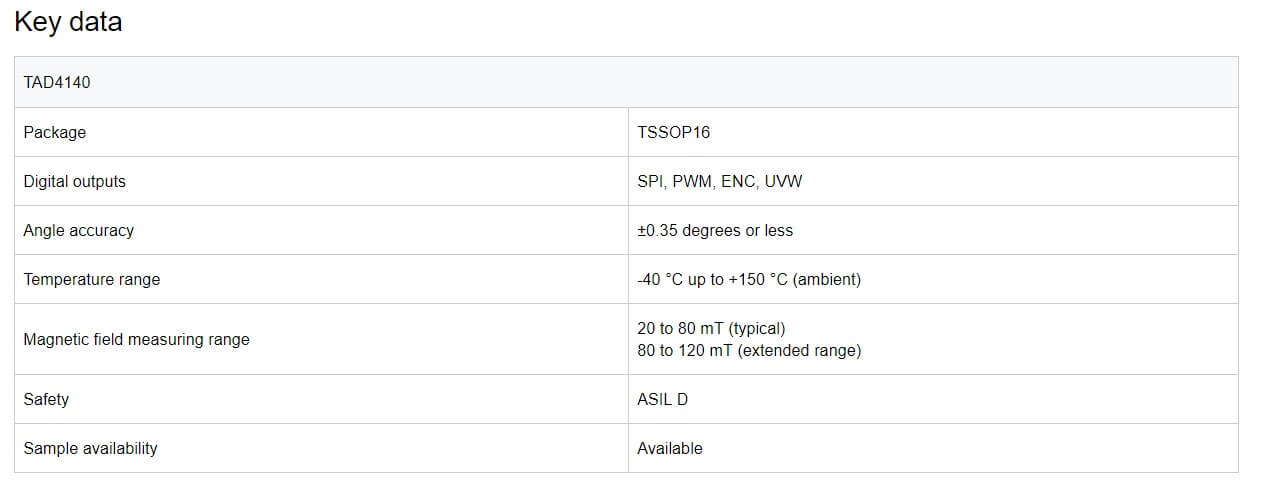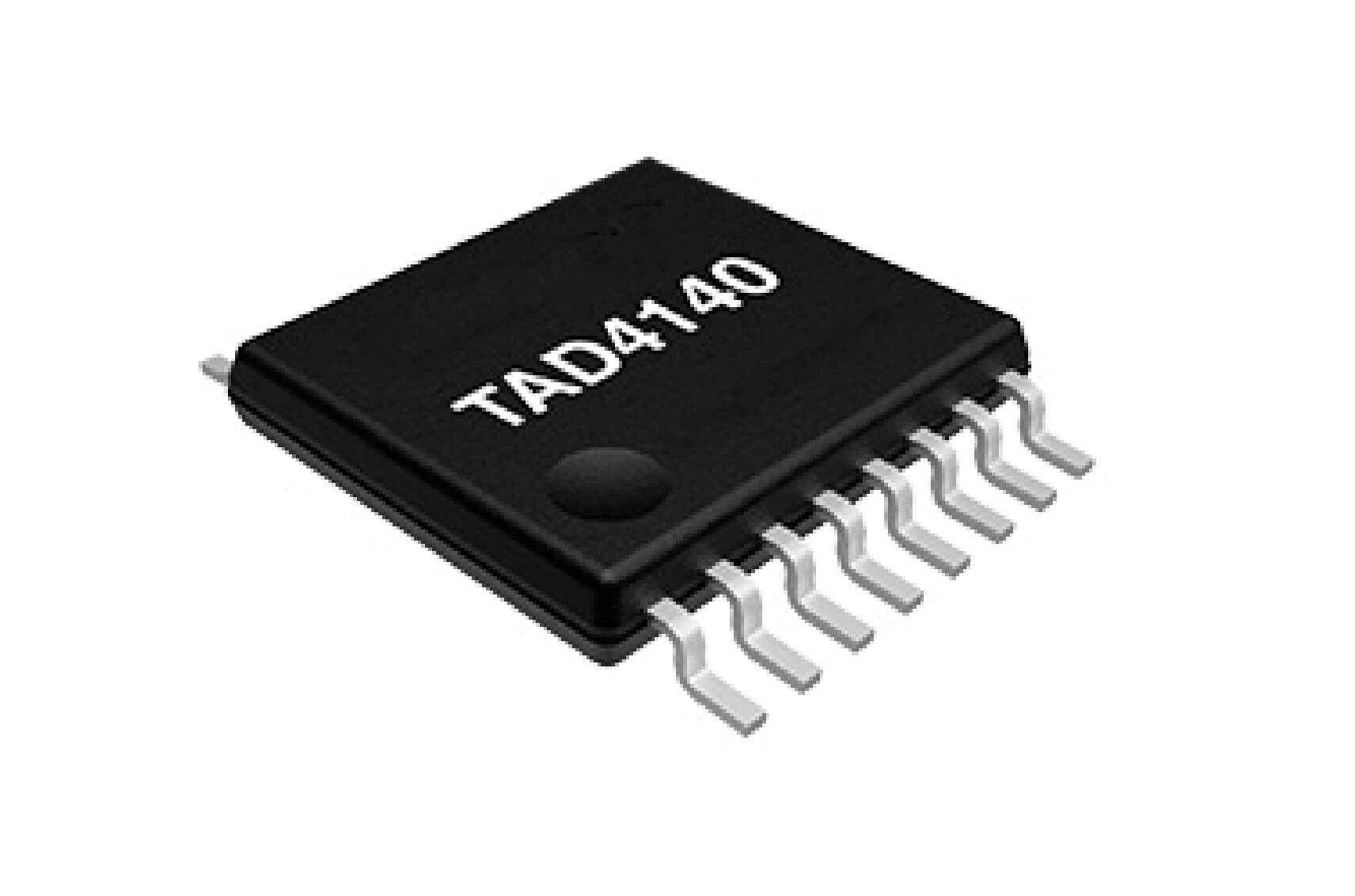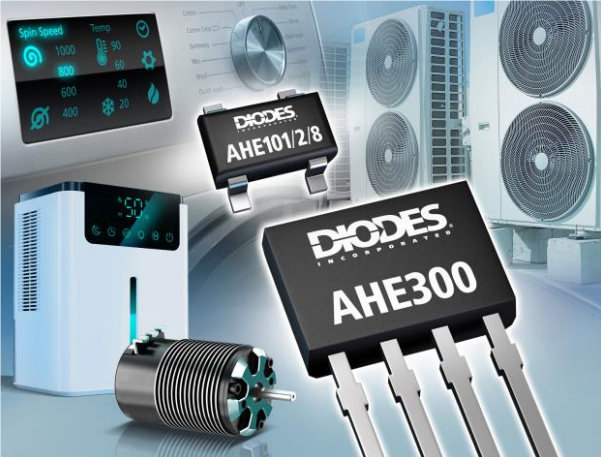TDK Corporation announced the expansion of its tunnel-magnetoresistance (TMR) angle sensor portfolio with the new digital TAD4140 sensor. Designed for demanding automotive and industrial applications, compared to TDK’s existing digital angle sensor - the TAD2141 - the new TAD4140 features full redundancy with two signal processor units and 2x2 TMR bridges in a single TSSOP16 package. Both angle sensors are capable of contactless sensing up to 360 degrees within an ambient temperature range of -40 °C up to +150 °C, making the device suitable for motor-control applications such as Brushless DC (BLDC) motor commutation in electric power assisted steering (EPAS) systems.
The various internal diagnostic features of TDK's digital angle sensor portfolio make both the TAD2141 and TAD4140 compatible with stringent automotive applications where functional safety is required, with the TAD4140 meeting the requirements of Automotive Safety Integrity Level D (ASIL D), and able to support fail-operation mode due to its electrically-isolated signals, high signal availability, and high-diagnostic coverage.

Digital outputs support functionality such as Hall emulation (UVW), encoder up to 12 bits (ENC), incremental encoder (ABZ), pulse width modulation (PWM), and Serial Peripheral Interface (SPI). Due to its built-in redundancy, the TAD4140 can simultaneously give two different outputs such as ABZ and ENC to calculate speed, direction, and motor position.
This means the sensor can be employed in applications with two electronic control units (ECUs) working in a master/slave configuration, for example in applications like steering motor position detection.
TDK's state-of-the-art TMR technology can be used in combination with a dedicated application-specific integrated circuit (ASIC) including an embedded digital signal processor (DSP). With integrated static and dynamic calibration functions, both the TAD2141 and TAD4140 can compensate for drifts in gain, offset, or orthogonality. The sensors guarantee an angle accuracy of ±0.35 degrees, achieving the industry’s highest accuracy for angle error of only ±0.05 degrees at room temperature. Mechanical non-idealities including magnet tilting or magnet displacement can also be compensated for, allowing wider assembly tolerances for the mechanical components.
Both sensors are molded in a TSSOP16 package with identical pinout on one side of the package, giving customers design flexibility and simple switching to the redundant version (TAD4140) if required.
Samples of the TAD4140 are available now. Start of production is planned for the fourth quarter of 2020.












All Comments (0)